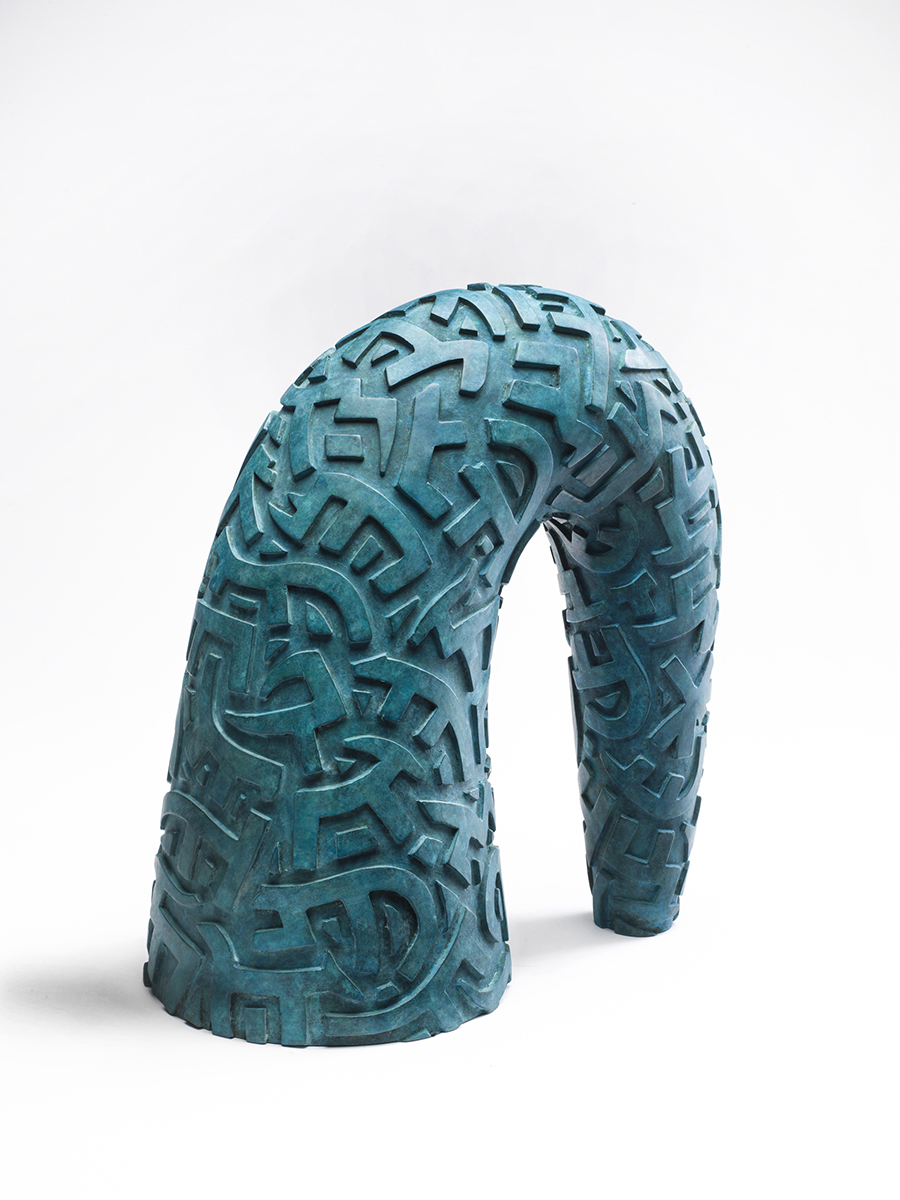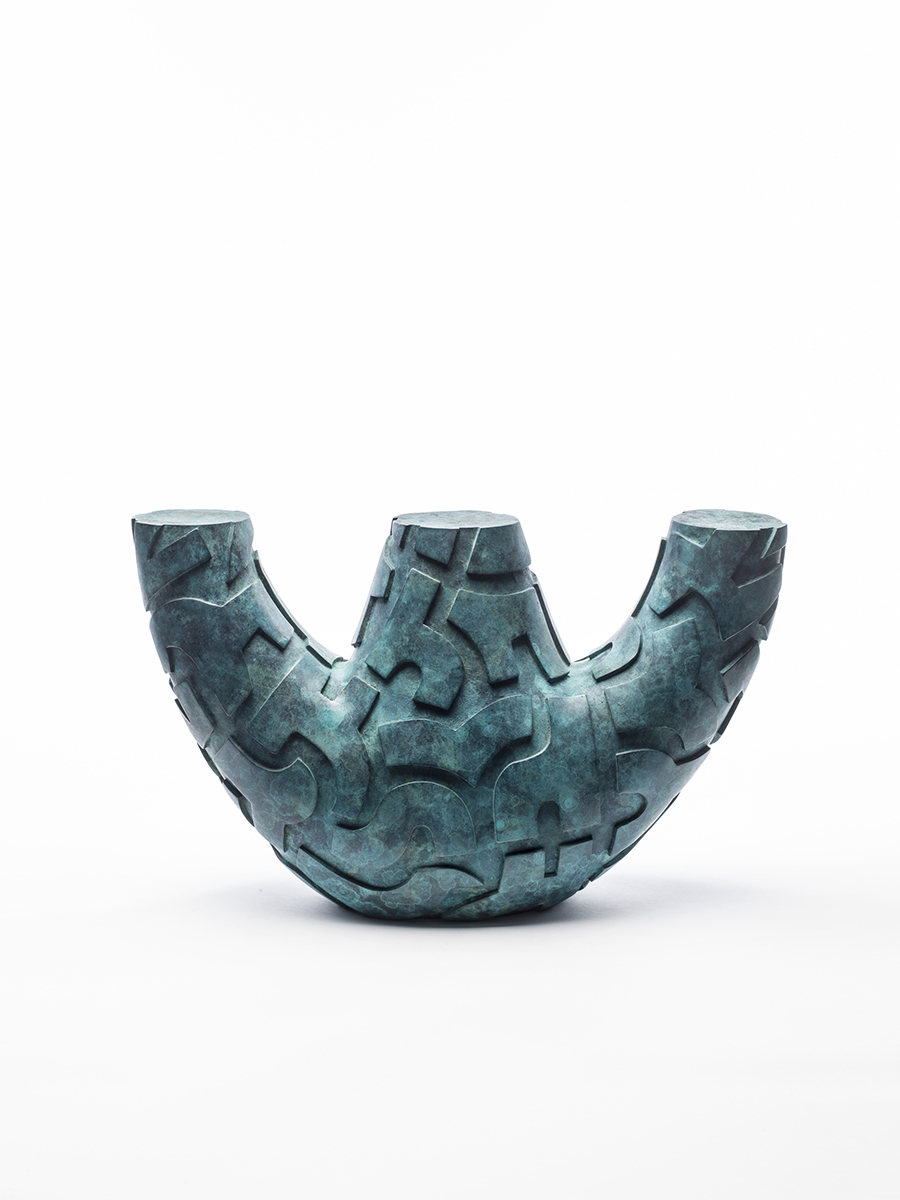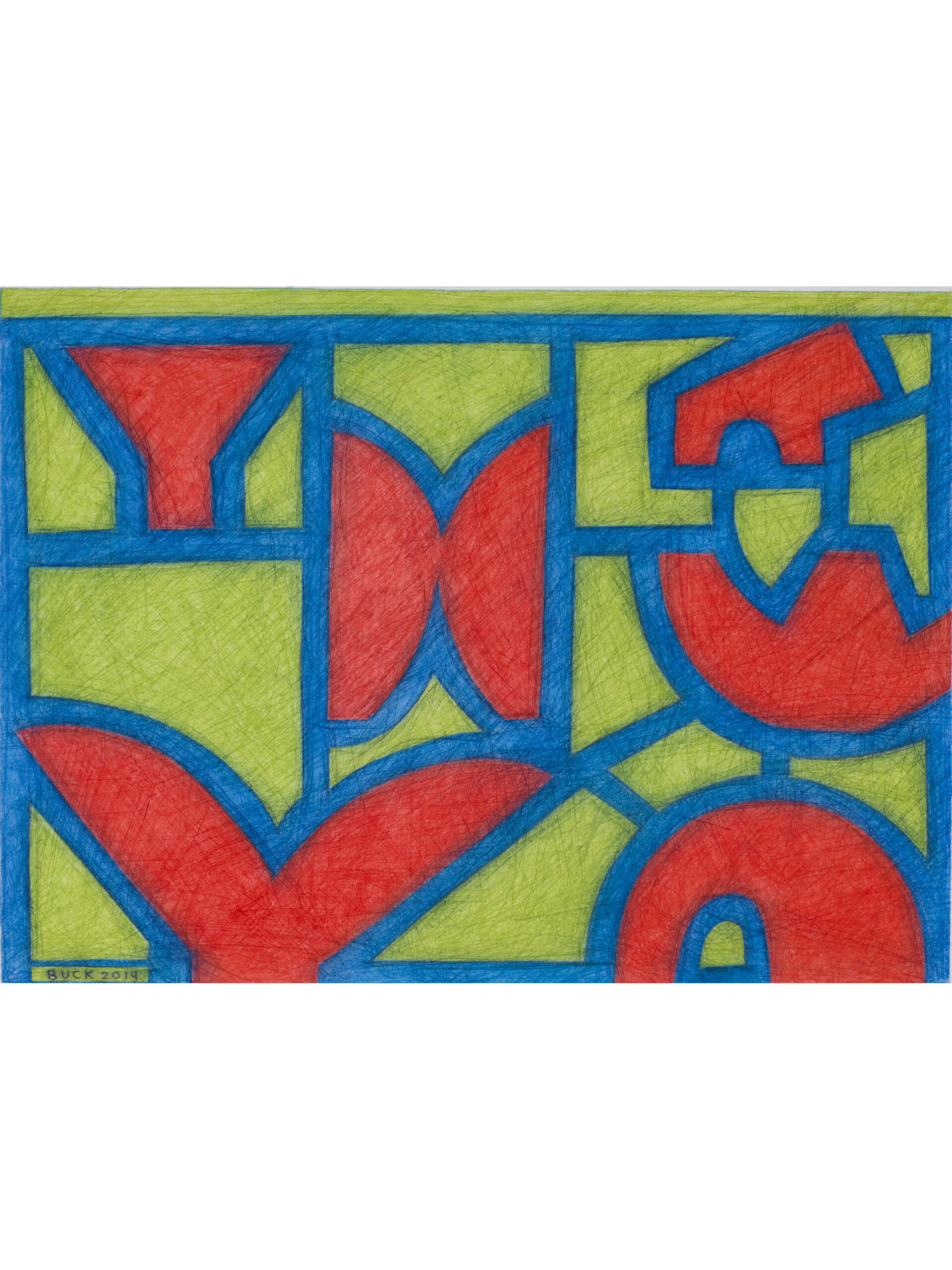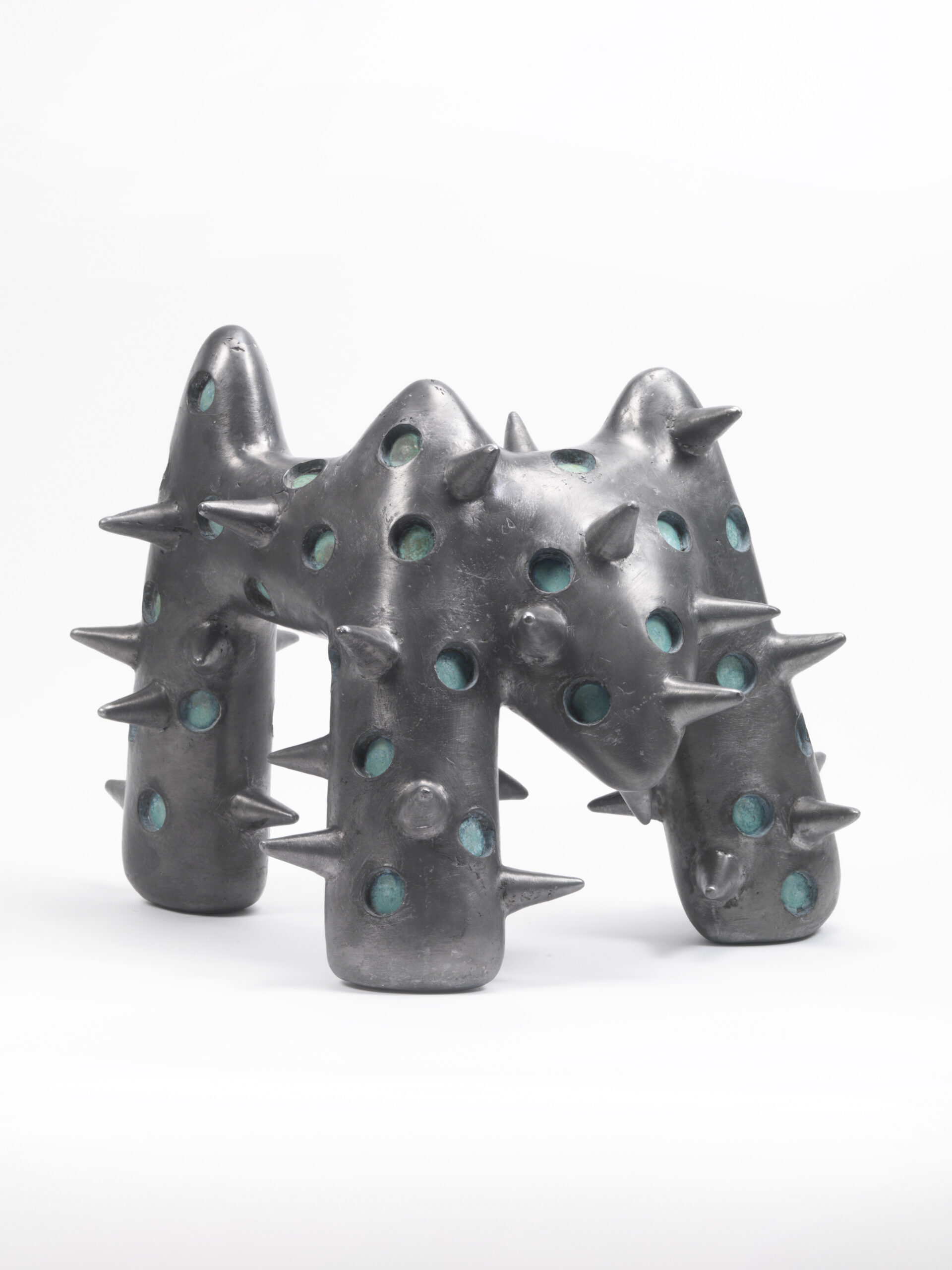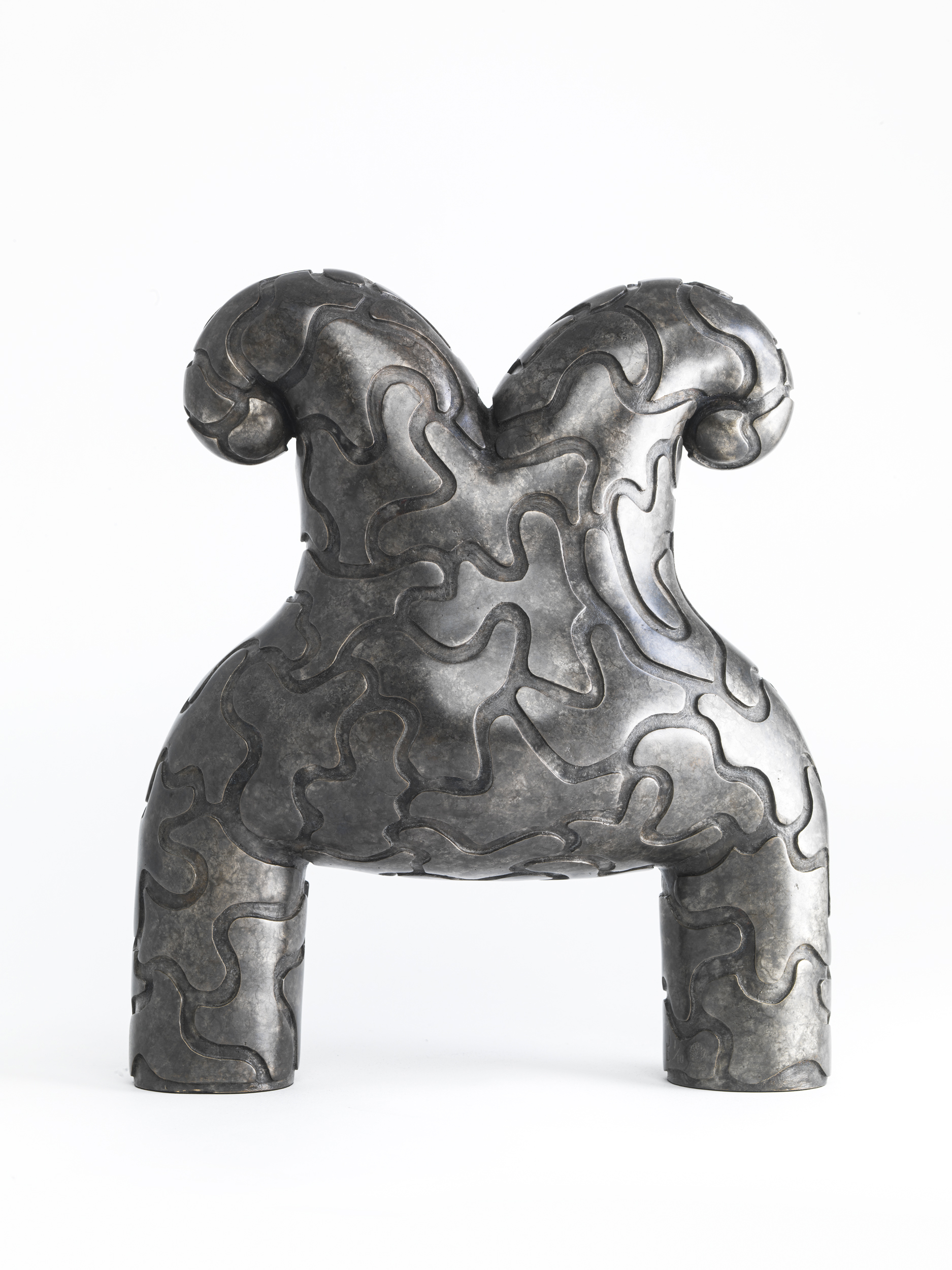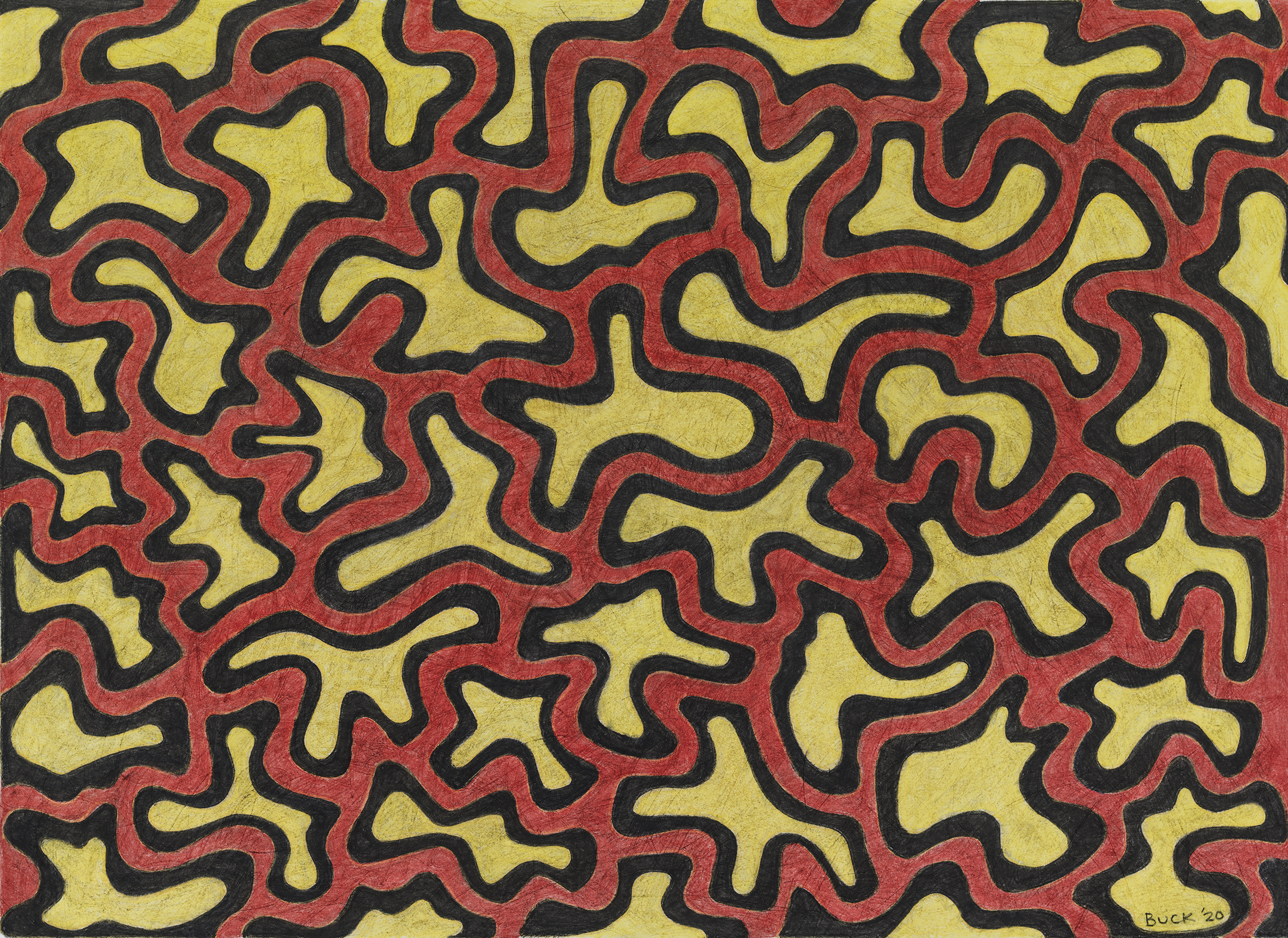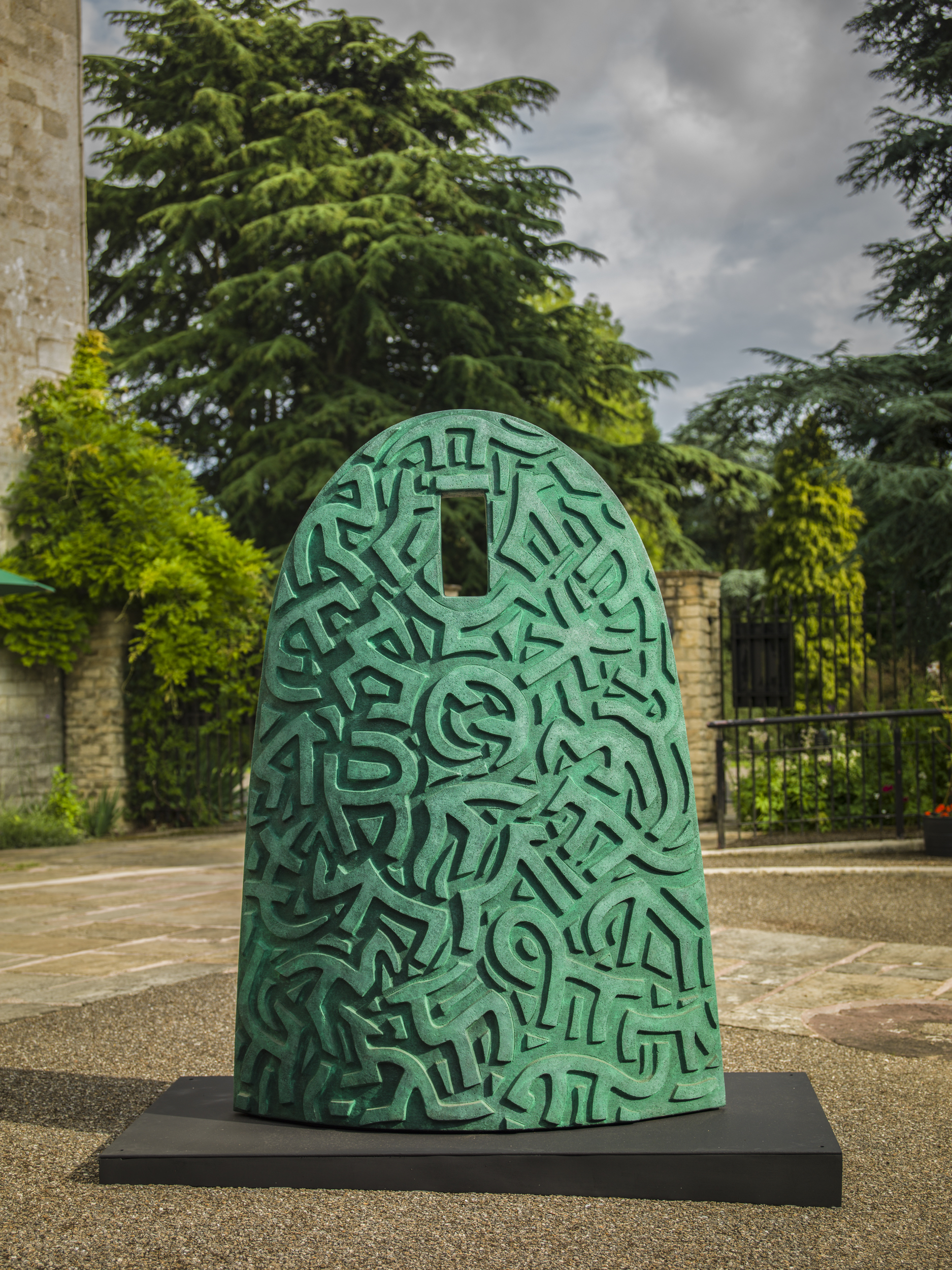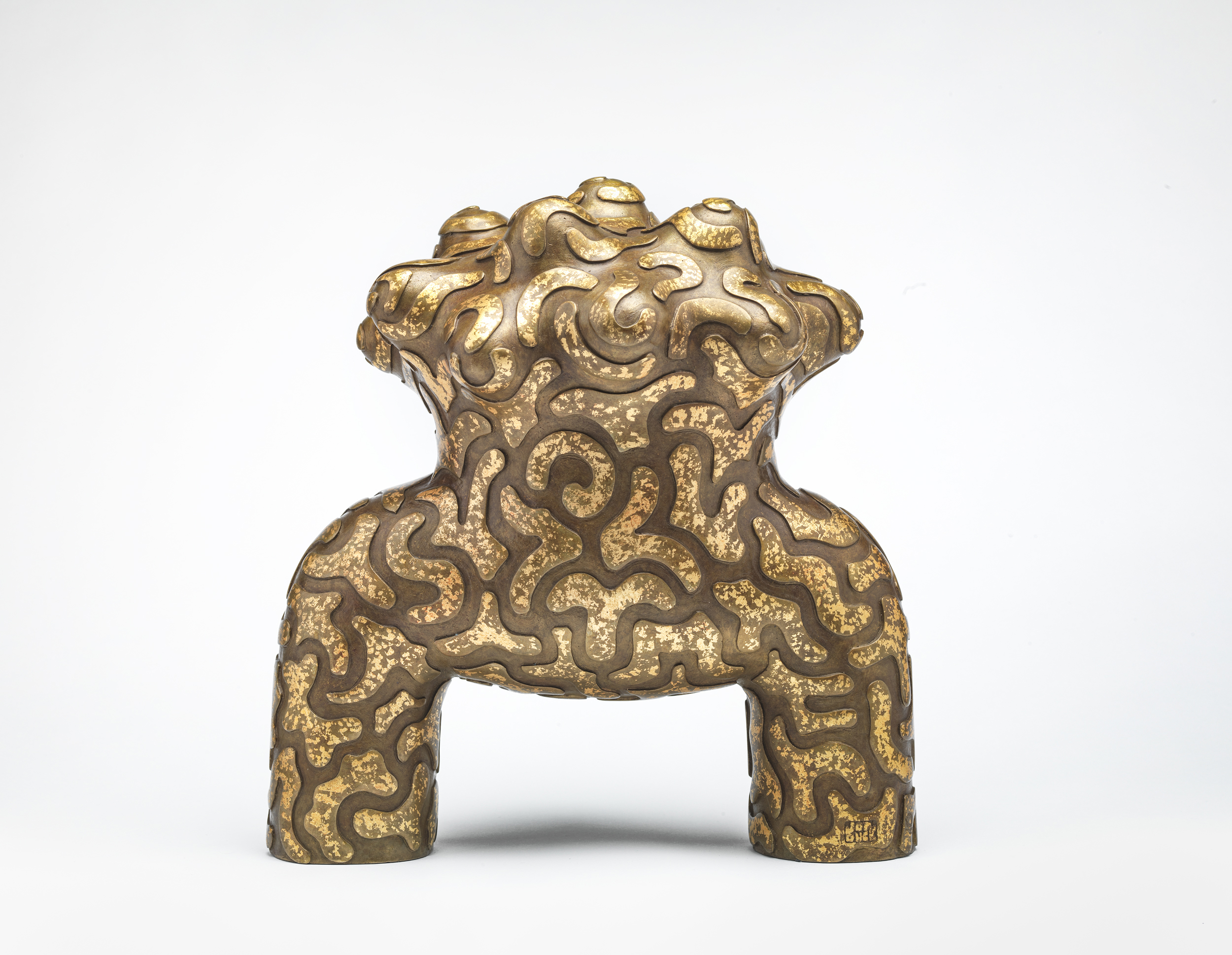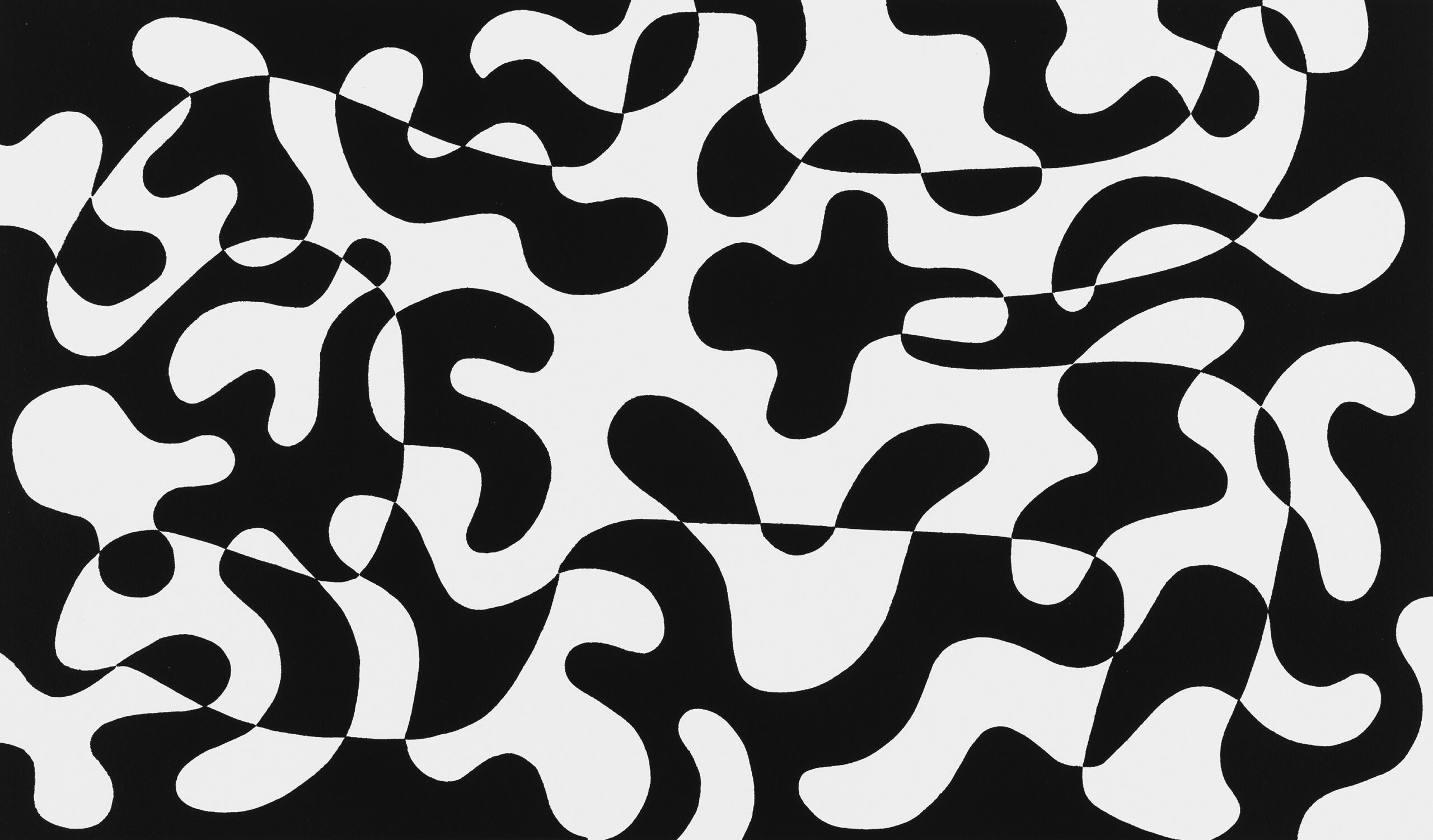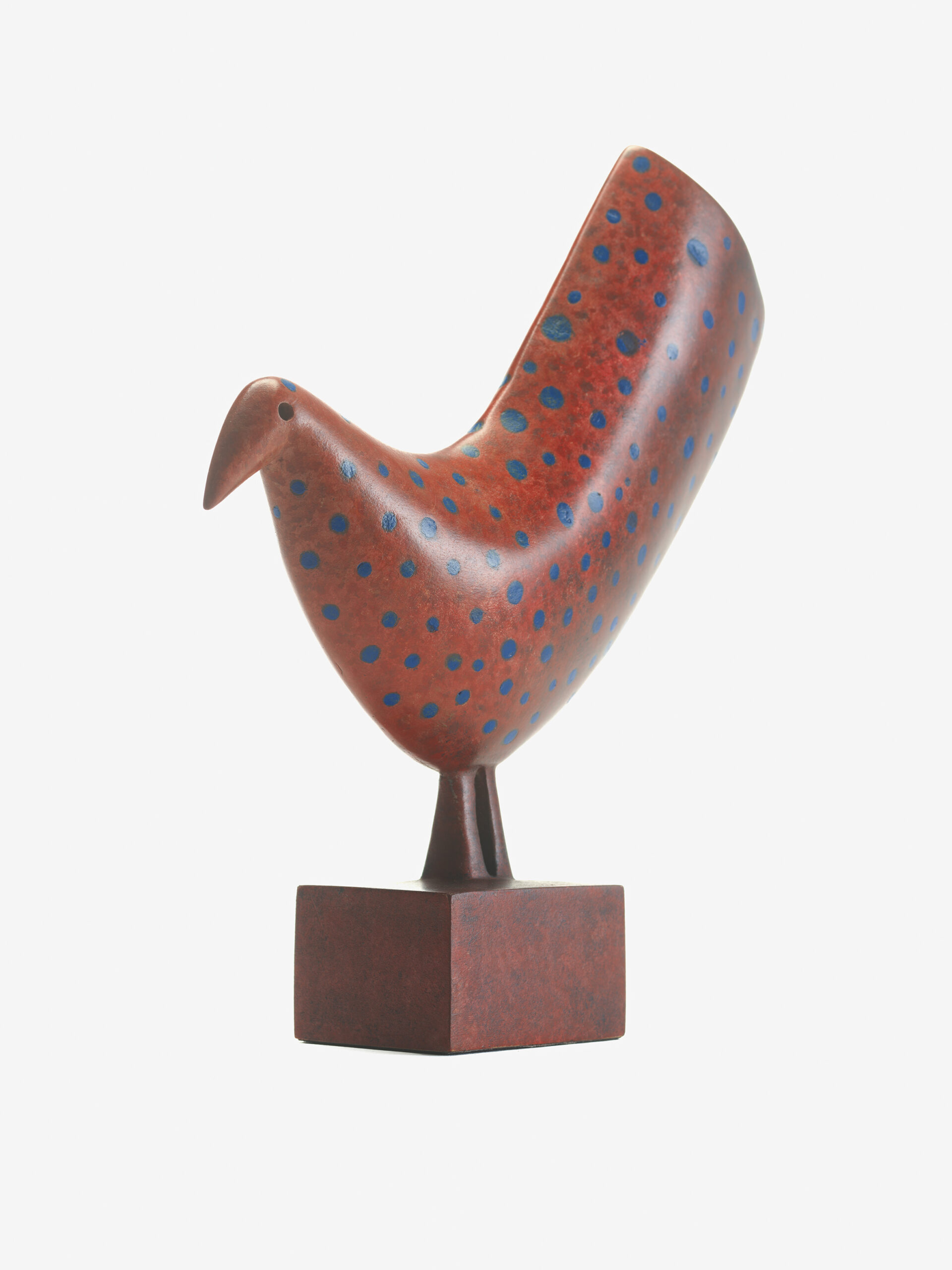Jon Buck
Jon Buck’s work draws inspiration from a wide range of sources, including historical, scientific and anthropological. He often focuses on African, prehistoric and early art, taking this as a starting point. Central to his work is our connection to the natural world, and he is fascinated by the evolution of this relationship that has taken place over centuries.
Making is integral to Buck’s practice, and is a primary reason his sculpture is so recognisably his own. He takes great pleasure in modelling: pulling and forming the clay, constantly inventing new forms, patterns and images. Casting from clay and plaster into metal provides a similar opportunity to celebrate the tactility of the medium, in much the same way that patina offers a freedom of result. In this way, marks incised or protruding from the surface of his sculpture provide a tangible appearance, akin to those on prehistoric cave walls. It is for this reason that drawing is a major part of Buck’s practice, acting not only as sketches or a visual diary, but a finished work in their own right that inevitably inform the textured result of his sculpture.
Jon Buck (born 1951), studied Fine Art at Nottingham Trent University before taking a Masters at Manchester in 1980. From here, he was awarded a Sculpture Fellowship at Cheltenham School of Art. Throughout his career, Buck has been awarded several prestigious public commissions, including Embracing the Sea in 1998 for Deal Pier, which won the Rouse Kent Award for Public Sculpture. Buck has also designed a series of over 30 Clan Totem animals in collaboration with the Ruwenzori Sculpture Foundation, a charitable trust that promotes cultural exchange between European and African artists. Buck was elected to the Royal West of England Academy in 1990, and as a Fellow to the Royal Society of Sculptors in 2012.
